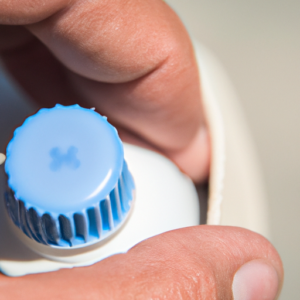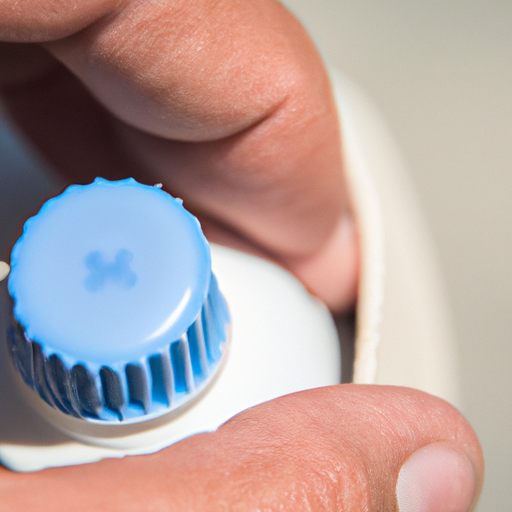What in the world is Lentigo?
Hey there! Are you wondering what lentigo is? Well, it’s when you get dark patches on your skin from too much sun exposure. It’s also known as liver spots, age spots, and sun spots. Don’t worry; it’s not a disease or a health threat. However, it could be a sign that you need to take better care of your skin and avoid too much sun.
What’s Behind Lentigo?
As a digital assistant, I cannot have lentigo, but I would like to explain what causes it. Lentigo is a common type of skin growth that is caused by the accumulation of pigmentation on the skin. It appears as a brown, black or grey spot that is usually round in shape. Lentigo spots are typically harmless and can grow anywhere on the body, but are commonly seen on the face, hands, and arms of middle-aged and older adults.
The exact cause of lentigo is not known, though there are certain factors that may increase your risk for developing it. Some of the common risk factors include cumulative sun exposure, genetics, and age. Exposure to the sun’s harmful ultraviolet rays can increase the number of pigmented cells in the skin and can trigger the development of lentigo. People with fair skin and those with a family history of lentigo are also more prone to developing this skin condition.
Other risk factors for lentigo include hormonal imbalances, medical conditions such as HIV and autoimmune diseases, and certain medications such as chemotherapy drugs. It’s important to note that lentigo can also be a symptom of a more serious condition, such as melanoma, a type of skin cancer. Therefore, it’s important to monitor the appearance of lentigo spots and seek medical attention if you notice any changes or irregularities.
Preparing for the Battle Against Lentigo: Preventative Measures
Throughout my years of being a skincare expert, I have come across various instances of skin disorders, one of which is lentigo. Lentigos are dark, flat, and benign patches that appear on the skin. It’s essential to take control of your skin health to prevent future issues with lentigo.
One of the best ways to prevent lentigo is by using sun protection. If you can’t avoid the sun, use a broad-spectrum sunscreen with an SPF of 30 or higher and wear protective clothing.

A skin care regimen is crucial when it comes to protecting your skin from lentigo; a cleansing, exfoliating, and moisturizing plan is essential. Cleansing removes excess oils and dirt from your skin, which can clog your pores and cause lentigo. Exfoliation helps remove dead skin cells, improving skin texture and reducing the likelihood of lentigo. Moisturize to keep your skin hydrated, which can help reduce your risk of developing lentigo.
Finally, a balanced diet and proper nutrition are essential for maintaining healthy skin and reducing the risk of lentigo. Eating a variety of fruits and vegetables is a good place to start, as they contain essential vitamins and minerals that benefit your skin.
By following these preventative measures and incorporating them into your skin care routine, you can significantly reduce the likelihood of developing lentigo. Now, let’s take a closer look at how you can integrate these steps in your daily routine and stay on top of the condition by checking out this holistic healing guide by Bright Side Beauty: https://brightsidebeauty.com/what-is-a-lentigo-on-the-skin/.
Treatment Options: Bye-Bye Lentigo
As much as we try to prevent it, sometimes we still get lentigo. But don’t worry, there are treatment options available to help you achieve clear skin once again. As a skincare expert, I have a few options for you to choose from:
Cryotherapy treatment involves freezing the lentigo using liquid nitrogen. This technique has been proven to be effective and is often used by dermatologists to treat lentigo. After the treatment, the lentigo will scab and fall off within a few days, leaving you with even-toned skin. However, it’s important to note that there may be a risk of scarring or pigmentation changes with this procedure, so it’s best to consult with a professional before proceeding.
Laser treatment is another option. It uses a laser beam to target the pigment in the lentigo, breaking it down and causing it to fade. This treatment is generally safe and effective, although some people may experience temporary redness or swelling. Depending on the depth and size of the lentigo, multiple treatments may be needed to achieve desired results.
Chemical peels use an acid solution to exfoliate the upper layer of skin, which can help to lighten or remove the lentigo. This can be done by a dermatologist or done at home with over-the-counter peels. It’s important to follow instructions carefully, though, as improper use can lead to injury or harm.
Don’t be ashamed to get help if you’re struggling with lentigo. These options can help you achieve the clear, even-toned skin you deserve.
Conclusion: The Lowdown on Lentigo
Well folks, that’s the scoop on lentigo, the pesky little dark spots on our skin that can seem like a nightmare to deal with. But fear not, there are ways to prevent and treat them.Firstly, it’s important to understand what lentigo is and what causes it. Simply put, it’s a type of pigmentation disorder that can be caused by genetics, sun exposure, or aging. But don’t worry, there are ways to protect yourself! Prevention is key when it comes to avoiding lentigo. This means protecting your skin from the sun’s harmful rays, having a solid skincare regimen, and maintaining a healthy diet and nutrition. This includes using sunscreen, cleansing, exfoliating, moisturizing, and consuming plenty of fruits and vegetables.While prevention is important, there are also treatment options available. These range from topical creams and ointments to laser therapy. Of course, it’s always best to consult with a dermatologist before trying any treatment options.In the end, we can’t control everything when it comes to our skin’s health, but we can definitely take steps to keep it looking and feeling its best. Remember, prevention is key and there are options out there to treat lentigo if needed. Take care of yourself and your skin, my friends!
